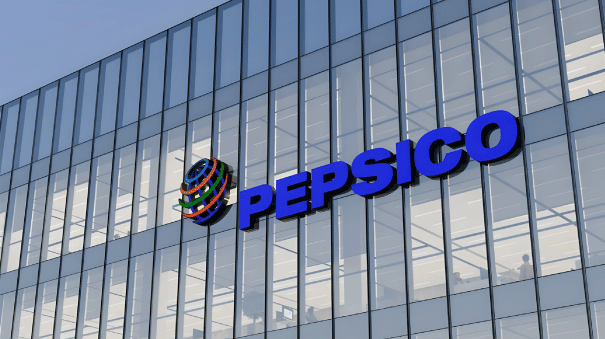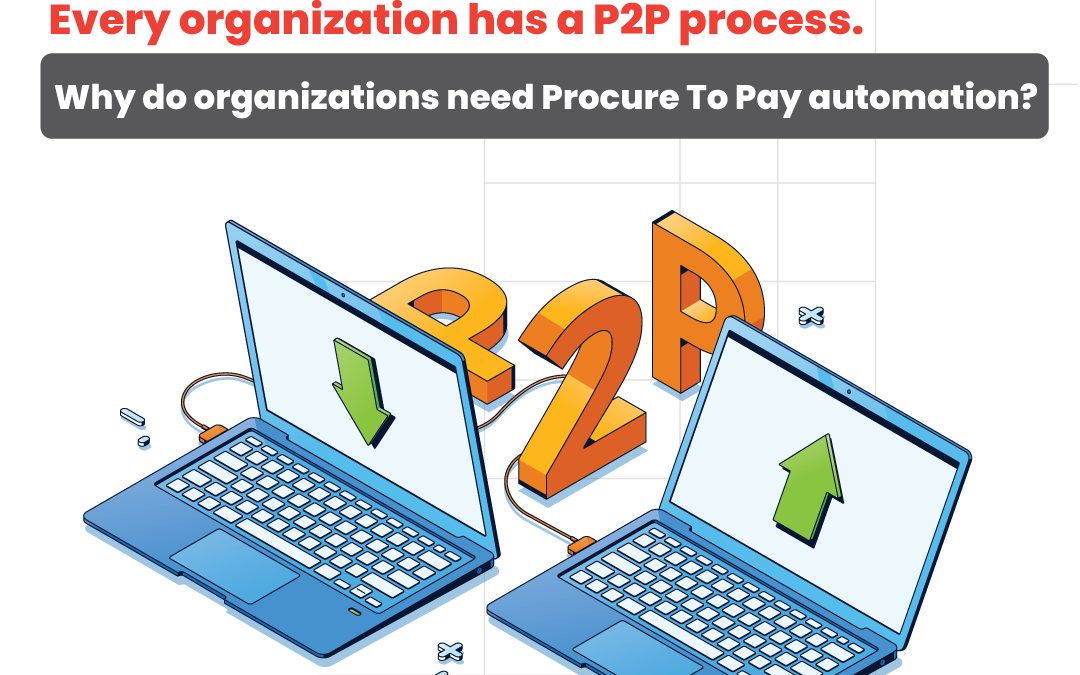Introduction
With the growing prevalence because of its efficiency & unlimited prowess, AI is imperative for every business. In the same lines, it has proven itself right for a company’s finance operations as well. In this article, we will see how AI will prove to be a technology of today from which we are getting real results in a procure to pay process automation and how it can prepare you for the future.
So, to resolve the problems prevailing in the P2P cycle, the industries need an integrated platform addressing the diversity of data and specific business needs. We need a solution that identifies the changing data, handles it accordingly, and breaks the silos in business processes. Here the role of technologies, such as artificial intelligence, proves to be helpful. Blockchain, along with artificial intelligence, is leading the Industry revolution and solving complex business problems. Enterprises are increasingly discovering new business applications to drive the 3Es – efficiency, economy, and experience.
P2P Process in a Glimpse
The procure-to-pay process, also known as purchase-to-pay and P2P, is how an organization’s P2P cycle goes from requisitioning, purchasing, receiving, payment, and accounting for goods and services needed to do the business right from ordering to payment.
A Gartner’s report recently claimed that by 2025, more than 50% of organizations worldwide would include cloud-based procure-to-pay. Cloud-based and SaaS procurement tools and vendors such as WeP Solutions are gaining traction as organiZations learn owing to the benefits and cost-saving opportunities they offer using procurement software.
An organiZation’s capability depends upon the efficiency it offers in its Procure-to-Pay process. The P2P cycle involves the technological steps to obtain raw materials from the supplier, decide the quantities, and estimate production costs.
Steps of a Procure to Pay Cycle
An efficient Procure to Pay Solution such as WeP Solutions follows the following steps of execution:
Step 1: Identify Business Needs
The first step in a procure-to-pay process is to discover and ascertain the business requirements defined by the stakeholders. Once a need is identified, the E-procurement software team hatches out the high-level goods specifications and terms of reference (TOR) and statements of work (SOW) for services.
Step 2: Requisition Creation
After the specifications, TOR and SOW are finalized, a purchase requisition is made after ensuring all necessary administrative requirements are met. Requisitions can be for any type of procurement, right from standard purchases to subcontracts and consignments.
Step 3: Requisition Approval
The procurement officers review purchase requisitions. After this, the need evaluation, budget verification, and purchase requisition form validation are done.
Step 4: Purchase Order Creation
Depending on the category and characteristics of the requested goods, a purchase order or a spot buy is created from approved purchase requisitions.
What is a Purchase Order?
A buyer uses a purchase order to place an order and issue it before delivery. A seller issues an invoice using invoicing software the order is delivered. The purchase order defines the amount for the purchased goods and the date by which a payment is to be made.
Step 5: Approving Purchase Order
Purchase orders are sent for approval in a PO format to ensure the accuracy and legitimacy of the specifications and dispatched to vendors. After purchase order approval, a contract is made in place.
Key Difference between Buy and Purchase
In commerce terms, buy means to get something in exchange for money or goods, while a purchase is an act of seeking and obtaining a thing or acquiring a possession by paying an equivalent.
Step 6: Delivery of Goods
Once the supplier delivers the goods, the buyer inspects them to ensure their compliance and standards with the terms in the contract specified for the purchase order. Based on the data, the supplier performance is assessed based on the factors such as quality, prompt delivery, contract compliance, and Total Cost of Ownership (TCO).
Step 7: Sanctioning Invoice
As the receipt of the goods is approved, a match between the purchase order, vendor invoice, and the receipt of the goods is made. With no fallacies, the invoice is forwarded to the finance team for disbursement of payment.
Step 8: Vendor Management and Payment System
After an approved invoice is received, the finance team processes payments as per the contract.
Purchase to Pay Software Automation
A P2P software integrates requisitions, purchase orders, goods receipts, and invoices within a single interface. Procure-to-pay automation can streamline the process, optimize spend, improve compliance, reduce cost and mitigate risk.
The Procure To Pay Solution delivers an integrated solution set that automates an organization’s procure-to-pay process. The solution has a spend data analysis, compliance-oriented strategic sourcing, supplier-managed web content, and touch-less eCommerce payment. It also intelligently restores purchase orders, contracts, and invoices, so that the purchasing and finance departments have the data in real-time to optimize the procurement activities across the organization.
The Procure-to-pay capabilities cover strategic sourcing, contract management, purchase orders, touchless payment and settlement, reconciliation, reporting, audit and control, and the procure-to-pay process analysis. There are inbuilt authorization controls to assure there is exact payment.
Benefits of Procure to Pay Automation
- Enhances the supplier invoices accuracy up to 60%.
- Gets potential discounts for early supplier payments.
- Saves the Procure To Pay Process cycle time to three times by speeding up the supply chain.
- Inflates the working capital management.
- Invokes intelligent payments.
- Reduces invoice processing cost up to 40%.
- Upgrades supplier budget adherence and analytics.
- Reduces the time for repetitive tasks needed for complex work, thereby reducing labor for handling procurement.
- Consolidates and centralizes the digital repository for company-wide contracts with the power of technology to stay compliant.
- Flags potential compliance issues, setting up before contract expiration dates alerts for negotiating of new contracts.
- It increases visibility in every part of the P2P process.
- Manages inventory better by monitoring stock levels and automatically reordering items.
- Enhances budgeting by generating in-depth expense reports and tracking.
- Manages multiple suppliers by keeping track of contact information, contracts, payment terms, and products.
The role of AI in Procure to Pay Software Solutions
Procure-to-Pay, at this phase, has inefficiencies in the form of invisible costs, inventory overloads, changing compliance and regulatory norms, lack of management in everyday operations, multiplex vendor communication process, etc. These are all because of the lack of technology in all the stages of the P2P Process. It is due to polymorphic, altering, multi-sourced, and asynchronous data.
Artificial intelligence has been used for many operations since the 1950s, but recently it has been used for applications related to procurement functions. Artificial intelligence allows organizations to handle complex tasks such as decision making, identifying opportunities, improving operations, automating manual tasks, capturing data, identifying new suppliers, and optimizing supplier relationships efficiently or effectively with intelligent computer algorithms. Software applications can embed AI to look after the spend analysis, contract management, and strategic sourcing.
AI works with blockchain, where a blockchain solution intensifies the audit trail, fosters settlement processes, and increases security. At the same time, the AI enhances data processing and analysis for a seamless blockchain performance and offers insights on how increased visibility in the Blockchain is benefitting the stakeholders and the management by getting instant and the perfect data to process.
To read more on AI in Procure-To-Pay, click here to head to another detailed blog –CLICK HERE!
Procurement AI Software
Here are the common areas where we can use AI across the procurement cycle.
- Automating Accounts Payable
The accounts payable automation software uses machine learning to speed up payment workflows and identify frauds.
- Contract Management
AI’s natural language processing enables software to scan and interpret lengthy documents for potential savings with P2P help.
- Contract Lifecycle Management In Procure To Pay
AI has been impacting the contract lifecycle management (CLM) for contract generation, negotiation, and contract risk identification by reducing cycle time, streamlining contract management process, standardizing templates, automating agreements drafts, and managing the negotiation workflow by consolidating executed contracts and providing a complete audit trail.
These tools can identify contract language that deviates from a company’s policies using NLP and allows contract managers to review the clauses.
Organizations using AI-powered CLM systems can reduce generating and negotiating with counterparts and identifying discrepancies in contracts. The procurement teams also benefit from these technologies by facilitating mergers and acquisitions, assignment identification or termination rights, and negotiating the corresponding consent.
- Risk Management
Artificial intelligence monitors and identifies the potential risks across the supply chain. It screens millions of data sources and provides alerts in Supply Chain Risk Management software.
- Software Purchases
AI reviews and approves the purchase orders by checking the status of purchases or approving card payments automatically.
- Spend Analysis
AI improves processes such as automatic spend classification and vendor matching.
- Strategic Sourcing
AI manages and automates sourcing events.
- Supplier Identification
Big data techniques allow identifying, management, and utilization of supplier data across databases. It enhances supplier discovery based on information received.
- Vendor Management System
Here’s how automation helps in identifying the right vendor & placing the purchase order using the below steps:
- The proposed solution onboards the organization vendor into a blockchain after completing E-KYV (Know Your Vendor) procedure. The E-KYV solution performs supplier risk management services by analyzing, aggregating, investigating, and verifying vendor data.
- After the screening, the vendor joins the Ethereum network for quicker invoicing and faster payment receipt.
- The vendor and the business create a contract to facilitate every term of it.
- A Purchase Requisition (PR) is placed, and the contract will be updated with the financials and volumes.
- The PR is converted to a Purchase Order (PO), updated into the blockchain after vendor approval.
- The Sales Order adds additional clauses like expected delivery date, actual price, etc.
- After this, every order-related action such as goods dispatched and received, invoice updated, and final payment is updated in the smart contract.
Wrapping Up
In this article, we have discussed an essential process used in the finance department of the organizations, i.e. procure to pay and how it gets automated and offers benefits.
We also looked upon how AI technology has been actively playing a part in the various processes involved in the P2P cycle. To read more about AI in P2P, CLICK HERE to head to our other blog!
If you are looking to automate the procure-to-pay process and speed it up, you have the best procure-to-pay software in the market, viz., WeP solutions.

